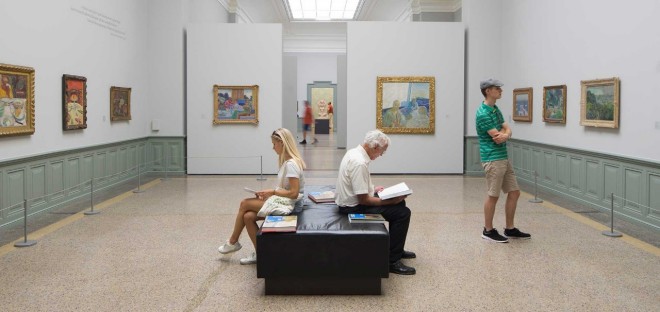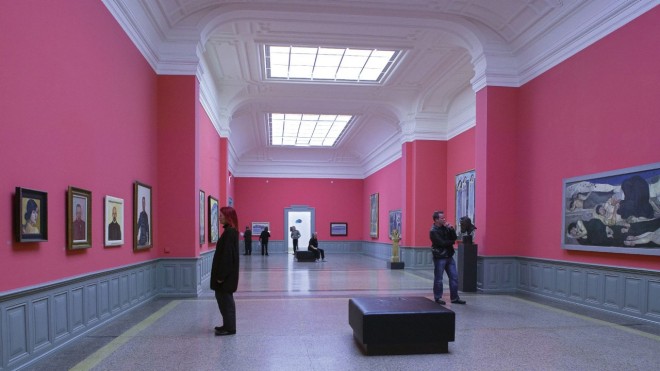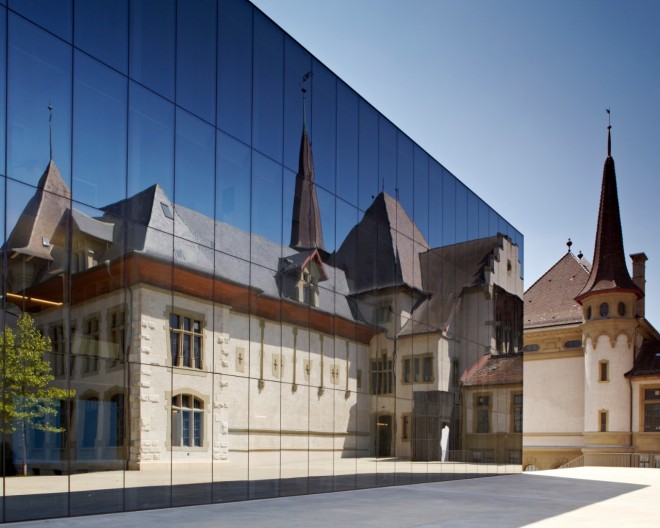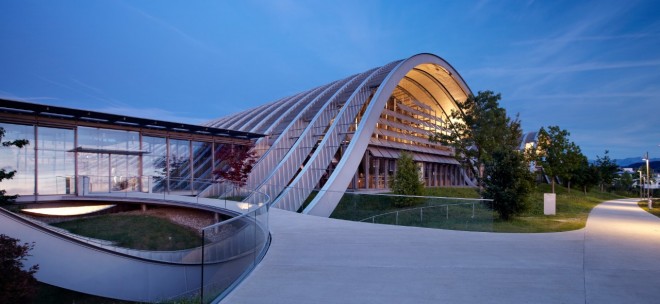+41 31 328 66 66

Switzerland became a federal state in 1848 and Bern was chosen as the capital city owing to its central location between German-speaking and French-speaking Switzerland.
Featuring a majestic golden dome and east and west wings, the Bundeshaus is the main seat of government and the federal administration. With its 300-metre-long parliament building, it is one of the most popular sights in Bern. The entrance hall features a huge sculpture that shows the symbolic importance of the Bundeshaus to Switzerland, depicting the three Confederates taking the oath on the Rütli meadow.
Good to know: You can join a free guided tour of Bern's Bundeshaus on Tuesday to Saturday when the National Council and Council of States are not in session. The tour offers insights into the building's history as well as information about the rooms and parliament.
Right in front of the Bundeshaus you'll find Bundesplatz – a 180 m2 square paved with dark stones of Vals gneiss. The square offers great views of the Bundeshaus and is used for weekly markets, political demonstrations, state receptions, concerts and sports events. The water feature on Bundesplatz is a special highlight: 26 fountains representing Switzerland's 26 cantons shoot jets of water up to seven metres high.
Around Bundesplatz, you'll also find the Swiss National Bank, Berner Kantonalbank and Bärenplatz with its wide choice of eateries.

The renowned Kunstmuseum Bern is the oldest art gallery in Switzerland to house a permanent collection. More than 50,000 masterpieces offer insights into eight centuries of art history. Alongside pieces by well-known Swiss artists such as Albert Anker and Ferdinand Hodler, Bern's art museum attracts visitors with its remarkable international collection, which includes works by Salvador Dalí, Claude Monet, Vincent van Gogh, Paul Klee, Wassily Kandinsky and Pablo Picasso. You can also admire 21st century works and contemporary art.
The art museum is an architectural fusion of historical Baroque and modern elements, making it an attractive venue for special occasions, conferences and corporate events. Exclusive guided tours and themed viewings are available on request.
Erected in 1894 under the guidance of architect André Lambert hailing from Neuchâtel, the Bern Historical Museum holds its position as Switzerland's second-largest historical museum. Its original intention was to serve as the Swiss National Museum; however, Zurich was ultimately selected as the host city for that purpose.
Within the museum's confines, an assortment of collections unfolds, spanning the historical journey of Bern across epochs ranging from prehistoric times to the contemporary era. Alongside this, a rich array of artifacts from Asia, Oceania, America, and Egypt are proudly put on display. Amid the treasures housed within its walls, the Muri statuette group emerges as an especially notable piece. Comprised of six Gallo-Roman bronze figurines, this ensemble holds remarkable significance.
Bestowed with the distinction of being a heritage site of national import, the Bern Historical Museum proudly presents a stained glass mosaic named "The Age of History" adorning its entrance. This intricate artwork, fashioned in 1900 by Swiss painter Léo-Paul Robert, captures the allegorical personas of Poetry and History.

Paul Klee was born in Münchenbuchsee in the canton of Bern on 18 December 1879. His diverse works are categorized variously as Expressionist, Cubist and Surrealist, making the painter and graphic artist famous worldwide.
The Zentrum Paul Klee in Bern boasts the world's most important collection of the artist's work and also offers interesting temporary exhibitions, guided tours and events such as theatre performances, readings and concerts. The building was designed by Italian architect Renzo Piano and is located near Schosshalden cemetery where Paul Klee is buried.
